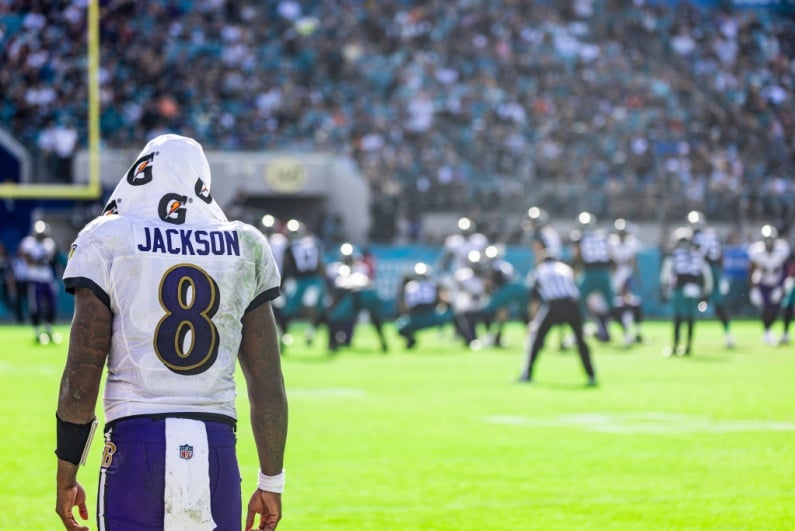
NFL quarterbacks’ production was down in Week 1 compared to their usual standard. [Image: Shutterstock.com]
Record-low QB yards
The modern NFL has been shaped to maximize its entertainment value with high-scoring games, star players, and lots of points. That’s why Week 1’s shockingly low level of offensive production went against everything that fans and NFL betting aficionados were groomed to expect.
the fewest in an opening week since 1996
More than half of the NFL’s starting quarterbacks failed to reach 200 passing yards in their first game. Teams averaged 188.3 passing yards, the fewest since Week 15 in 2007 and the fewest in an opening week since 1996.
What does a slow Week 1 for quarterbacks mean for NFL bettors moving forward? Let’s dive into the numbers.
Why the sudden change?
Week 1 was just the second time since the start of the 2011 season that at least 17 quarterbacks failed to hit a relatively modest milestone of 200 passing yards. That included all of the rookie debutants – Caleb Williams, Jayden Daniels, and Bo Nix – who combined for 415 yards (138.3 per player).
Williams, the first-overall pick in the draft and a player who has been likened to Patrick Mahomes, only managed 93 yards on 29 attempts, giving him an average of 3.2 yards per throw.
For context, NFL QBs averaged 219 passing yards per game during 2023. The 188.3-yard average was also down from the Week 1 record of 263.8 yards, set just five years ago.
So how and why did all of this happen?
NFL defenses played two-high shell coverages on 60% of snaps in Week 1, the highest rate since Next Gen Stats started tracking this data eight years ago.
this defensive structure was called on just 38.4% of plays
Five years ago, when the Week 1 record for average passing yards was set, this defensive structure was called on just 38.4% of plays.
Two-high shells are geared toward stopping explosive pass plays and keeping everything in front of the defenders.
That can also be seen in the average depth of target and average yards per reception, which were down in Week 1 (6.9 and 10.4) significantly from 2019 (7.9 and 11.4). Even last year, those numbers were at 7.5 and 10.9.
That, combined with 15 teams starting quarterbacks that either did not start last year, are coming off an injury, or are in their first two years of starting, bears heavy responsibility for the sharp decline in passing production.
NFL points betting not too dissimilar
So, with everything discussed above, the implication is that NFL betting was driven by the under on points totals, right? Wrong!
The 45.8 points per game scored during Week 1 was the highest opening-week average since 2021. However, teams only threw 35 passing TDs, the lowest opening-week total since 29 were thrown in 2006.
Meanwhile, ground production was well above its usual standard. Teams ran for 36 touchdowns, marking just the fifth time since the 1970 merger that there were more Week 1 rushing than passing touchdowns.
So, is there a new systemic issue with the NFL?
There are several reasons that the ground game could have overtaken the passing game last week. One of them is that teams typically play their starters very few snaps during the preseason and need time to gel. Another is that quarterbacks are becoming more mobile and are naturally going to throw for fewer yards if they’re running.
The new era of heavy transfer portal activity also means that college players spend less time developing their skills with the same coach and receiver group.
lack of passing yards isn’t yet enough to alter NFL betting approaches
Regardless, the over was still 9-7 (56.3 percent) in Week 1. That means that the lack of passing yards isn’t yet enough to alter NFL betting approaches in points totals markets.
Instead, looking at the under on quarterbacks’ passing yards and players’ receiving yards could be a better investment.

